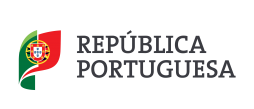Holy Bodies: An Atlas for the Corpi Sancti in Portugal
Heritage and Conservation-Restoration
- Typology: Projetos I&D. Project Reference: 2022.01486.PTDC. Funding: 248K
- Period: 36 meses (march 2023 to march 2026) · On going.
- Partner institutions: Universidade de Évora, Universidade NOVA Lisboa e Direção-Geral do Património Cultural
- Research outputs at Ciência UCP · DOI
Abstract
The Holy Bodies project intends to draw attention to the corpi santi, a particular type of full-body reliquaries that was profusely sent to the Western Catholic countries after the discovery of the catacombs in Rome, to promote and strengthen religious practice, as they also constituted a sign of power and influence for those who ordered them. The project aims to establish comprehensive discussions on the impact these cult objects had on the art history, cultural atmosphere, and devotional practice in Portugal during Modern times. The project aims to compare Portuguese Case studies and with Italians in a multidisciplinary overview gathering experts from Archives, Art history, Heritage Science, Conservator-restorers as well of digital humanities. 3D images will be used to document case studies and conservation protocols will be outlined. HB gathers contributions from Hércules Laboratory, CITAR and CHAIA research units.
The achieved results will later be published for documentary purposes to the respective owners, as it is primarily intended to raise awareness of the historical-artistic context and the value of these pieces to the entities that own and manage these assets, as well as their contextualization in the history of devotional practices and paraliturgical worship of the Catholic Church in the West, and particularly in Portugal.
Main researcher
PI - Teresa Ferreira (U.Évora/Lab Hércules); Co-PI – Eduarda Vieira (CITAR)
Research team
Alexandra Gago da Câmara (CITAR); Ana Curto (U.Évora/Lab Hércules); Ana Manhita (U.Évora/Lab Hércules); António Camões Gouveia (CHAM); Fernanda Olival (CIDEHUS); Paula Monteiro (Monumentos E.P); Luís Piorro (Monumentos E.P.); José Saias (U. Évora); Leonel Silva (U. Évora); Joana Palmeirão (Lab. Hércules/CITAR); Tracy Ireland (U. Camberra); Nuno Santos (Seminário Maior de Coimbra/UCP).
+ Info at Ciência UCP.





